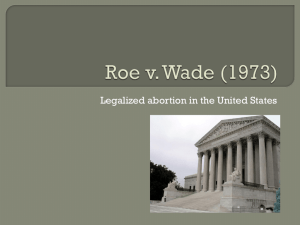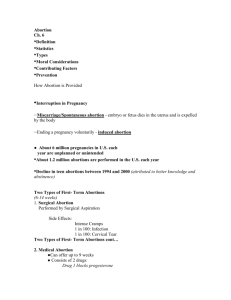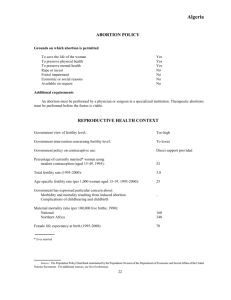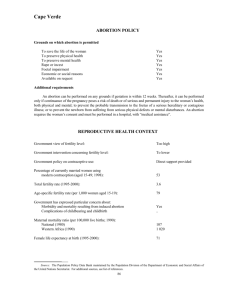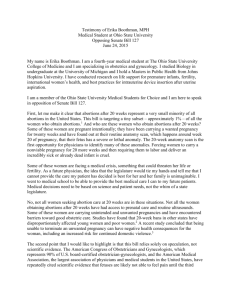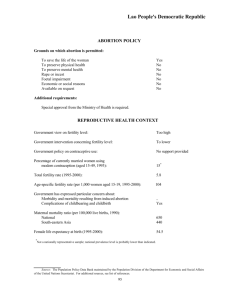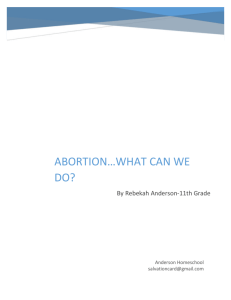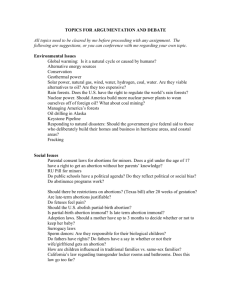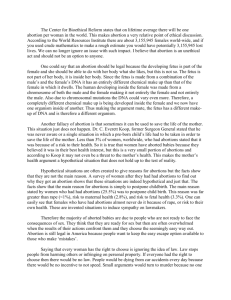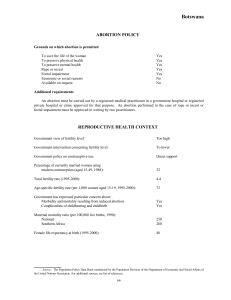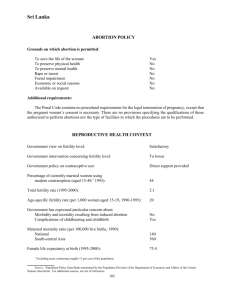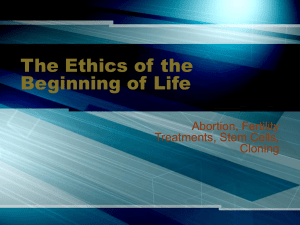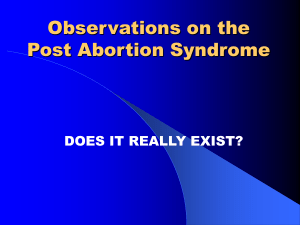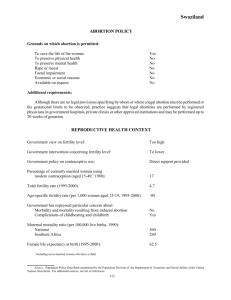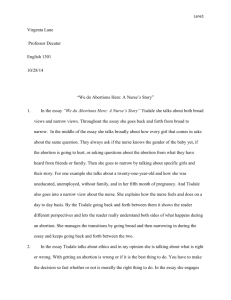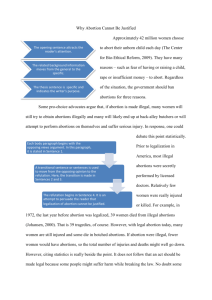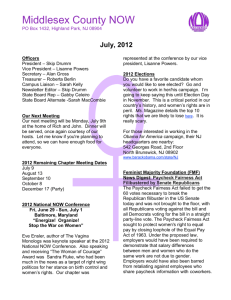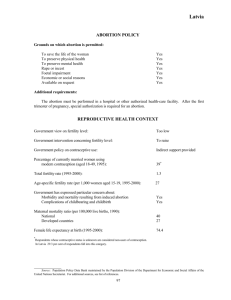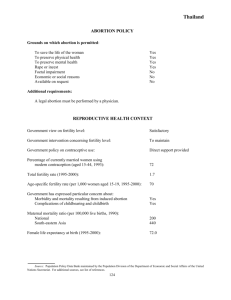An Economic Analysis of the Demand for Abortions
advertisement
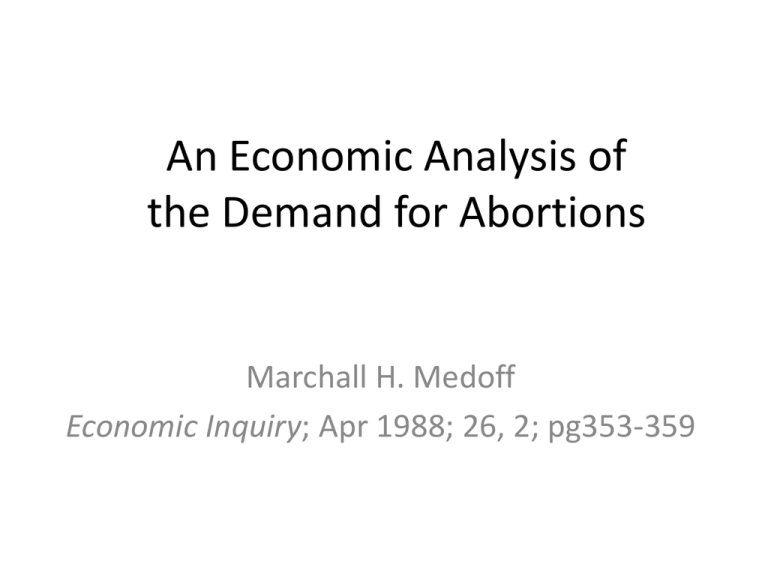
An Economic Analysis of the Demand for Abortions Marchall H. Medoff Economic Inquiry; Apr 1988; 26, 2; pg353-359 I. Introduction • Main Research Question: – Empirical estimation of the demand for abortions • Literature Review: the economic model of fertility control – Michael, Robert “Education and the Derived Demand for Children.” Journal of Political Economy, 1973 II. Theoretical Model • The economic model of fertility control: a household choice model – A household’s fertility control decision is based on a comparison of the costs and benefits associated with an additional child over time. – If the net cost if positive, a woman will engage in fertility control by purchasing and using goods and time inputs to reduce the probability of conception. – One good (zero probability of conception) is abortion. II. Theoretical Model (Regression Equation) • Corrections to the equations in the paper • Population regression equation: in equation (1) Ai=b0+b1Pi+b2Yi+b3SNGLi+b4LEPi+b5CATHi+b6Wi+b7Mi+ui • Estimated regression equation: in equation (2) Âi=-207.78-0.942Pi+0.031Yi+4.194SNGLi+4.456LEPi +1.207CATHi+18.287Wi+43.775Mi II. Theoretical Model (Regression Equation) • Ai=b0+b1Pi+b2Yi+b3SNGLi+b4LEPi+b5CATHi+b6Wi+b7Mi+ui – Abortion rate (the number of abortions per thousand pregnancies) of women of childbearing age 15 to 44 in state i during the 1980 calendar year (A) – State average price of abortion (P): b1<0 – State average Income (Y): b2> or <0 – Percentage of unmarried women (SNGL):b3>0 – Labor force participation rate(LEP):b4>0 – Percentage of Catholic population (CATH):b5<0 – States in the far West(CA, OR, WA, NV, AZ, HW) (W):b6>0 – Medicaid funding abortions (M): b7>0 Summary Statistics Variables A P Y SNGL LEP CATH W M Mean 250.898 213.64 6,407.3 34.158 61.99 20.022 0.12 0.28 Standard Deviation 87.847 43.15 936.338 3.956 4.602 13.806 0.3249 0.0448 Abortion ratios and rates • Abortion rate: number of abortions per 1,000 women aged 15-44 years • Abortion ratio: number of abortions per 1,000 live births • Figure 1 and Tables: http://www.cdc.gov/mmwr/preview/mmwrhtml/ss5713a1.ht m?s_cid=ss5713a1_e • Figure at the bottom: http://www.guttmacher.org/pubs/sfaa/texas.html III. Empirical Results • 2SLS (IVs) results • Ai=-207.78-0.942Pi+0.031Yi+4.194SNGLi+4.456LEPi (1.42) (3.22) (3.31) (1.74) (2.57) +1.207CATHi+18.287Wi+43.775Mi, (1.50) (1.74) (2.12) R2=0.77, n=50 • Price elasticity of demand: % in Q % in P Q P P Q -0.942* 213.64 250.898 0.81 III. Empirical Results (cont.) • Compare the results to the hypothesis – Comply with the law of demand – Consistent except CATH • Possible missing variables: – Education • may reduce the abortion by increasing the knowledge of effective contraceptive methods • may increase the abortion by increasing the opportunity costs of time – Aid to Families with Dependent Children(AFDC) • Corr(Y,Poverty)<0, Corr(A,Y)>0, Corr(A,Poverty)<0 • The effect of income is overestimated IV. Policy Implications • Forbidding all Medicaid-financed abortion: – Reduction of 44 abortions per thousand pregnancies or a 17.5% drop (262,500/1.5 million) in the 1980 abortion rate. • Illegalizing all abortions (assuming the illegal price is 50% higher) : – 50 % Increases in P would decrease abortion rate by 40.5 % (607,500/1.5 million). • The annual increase in the abortion rate is likely to be persistent due to high income, high divorce rates, low marriage rate

